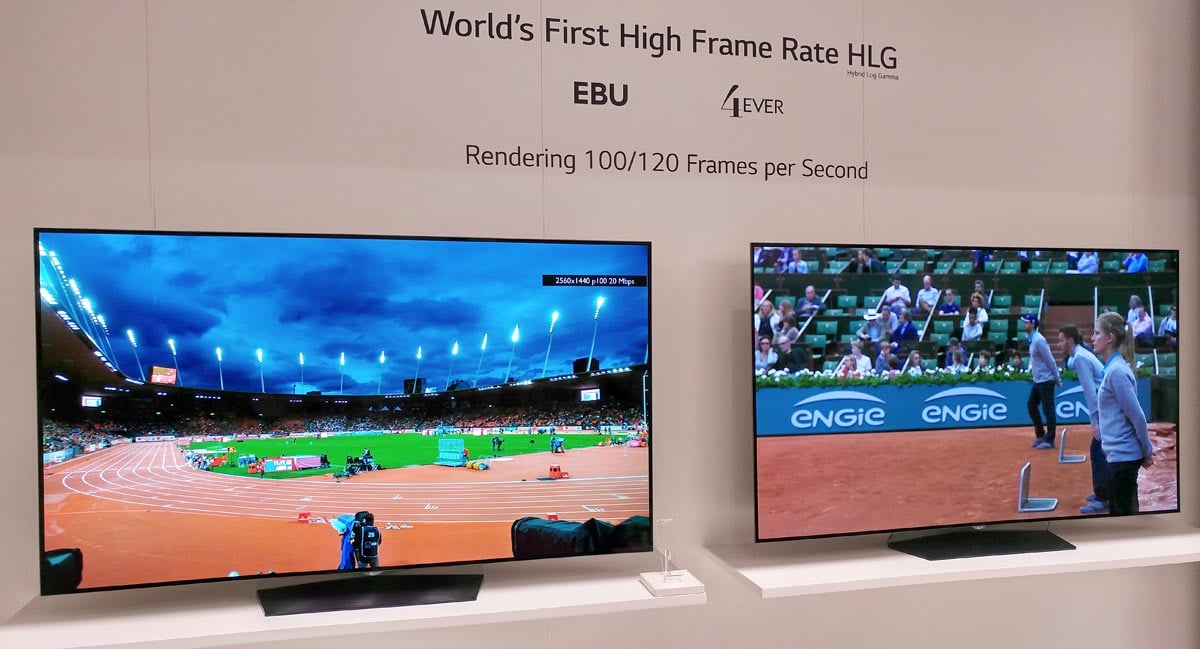
A Look Into The New Broadcasting Tech: Hybrid Log Gamma
In the upcoming days, we will see many new types of HDR (High Dynamic Range) to serve 4K content, but signs show that the HLG (Hybrid Log Gamma) may be the most important one yet.
To demonstrate its importance, we can say the HLG is something we can never ignore when we talk about buying TVs in 2017.
This tech is the result of a cooperation between the British BBC and the Japanese National NHK channel, and it aims to serve HDR content in TV broadcasts better than the current HDR10 system used by most current HDR using channels.
Why Would We Switch To HLG HDR?
You may think “why should we move to this system? and what would it do to the HDR tech?” well, the thing about this tech is that it combines SDR (standard dynamic range) and HDR (High Dynamic Range) in one single video signal that can be viewed as SDR on legacy SDR TVs and as HDR on HLG HDR supporting TVs, this means the video will surely work on all screens.
This signal will be delivered through a single bitstream in compression formats like the VP-9, HEVC or over HDMI, this means the video will take less of the bandwidth used in the method where SDR and HDR are sent separately, and it will still work within production workflows broadcasters are already using.
In layman’s terms, this tech is necessary to publishers who find themselves having to deliver live feeds, that are efficient, and consistent using HDR.
This may look a bit complicated but the whole HLG HDR magic comes from a technology called OETF (Opto-Electrical Transfer Function).
This tech even though it sounds scary just to say, is pretty simple in fact, it simply sets the relation between the video signal and the brightness, screens use this information and turn it into visible light; what the HLG uses is a ‘hybrid’ version of the OETF which allows delivering two types of light coding.
When an image has low brightness, the HLG sets a Gamma Curve — which is a legacy technique used in classic TVs to set the brightness decades ago, this means the TVs that use SDR will still be able to display the video signal normally.
The HLG applies a logarithmic curve to the high-brightness, this part is ignored by classic TVs using SDR but the HDR compatible devices will be able to show.
This -sadly- also means that you won’t be able to run HLG videos on all the HDR supporting devices because it will also not be able to recognize the logarithmic curve used for brightness, and in fact, up until now there is still no HLG supporting devices in the market.
When Will We Be Able To See HLG?
Many major companies in this field confirmed that 2017 is the year the HLG will be ready for application, Samsung and LG confirmed that even the 2016 screen models will support the HLG with a firmware update, this is definitely good news for people who bought new 4K devices. they will not have to buy new devices to be able to watch HLG videos.
Projectors on the other hand already have some supporting devices like Sony’s VPL-VW550ES projector which Sony has confirmed HLG support on, and JVC’s upcoming DLA-Z1, X9500, X7500 and X5500 projectors
that will definitely handle HLG following their launch.
Also, Google’s Android TV V7.0 will support HLG in the new HDMI 2.0b connection update.
Even though the whole thing of this research is to get better 4K HDR TV broadcasts, there still is many questions about this tech that are not yet answered.
Many HLG demos where done but till now none gave a higher resolution than the ‘modest’ Full HD instead of the mother 4K Ultra HD resolution.
Some industry commentators also believe that the way HLG works will cause performance problems with both HDR and SDR!
But overall, we still can’t give a solid opinion about this tech for one simple reason, there is still no final HLG content yet and the tech is still under development.
Demos for this tech have been shown at technology shows and press events for many months now, and it looked like HLG was used officially by the BBC in December 2016 for a 4K clip of Planet Earth II delivered to iPlayer, which was said to be available in HLG, but after looking into it, it was served with SDR and not HDR so now mainstream showing for HLG yet.
HLG is definitely coming mainstream soon, the BBC surely has an intention to use it, also Mediapro/Overon officially declared that it intends to transmit the Spanish Football League in it, Google also recently announced that Youtube will have HLG HDR video support.
Many other companies like Digital UK, Eutelsat, And Sky, have the intention to use HLG in future products and services.
This may not be the only HDR tech coming in 2017 but it may be the first to be used in 4K broadcasts, that’s what we’ll be looking up to see this year.
